The old adage ‘a picture tells a thousand words’ has been used so often that it has almost lost all meaning.
A picture can explain a story better than just words on the page; however it’s the combination that’s so powerful.
The combination is what provides all new meaning and comprehension. It acts as a multiplier. The exact same can be said about using different print media formats to contextualise your messaging and tell your story.

Sales and marketing has changed so much. There are traditions and principles around today that were around hundreds of years ago; but the way that we consume media, couldn’t be more different.
THE WORLD IS A VERY SMALL PLACE
Once upon a time, even as little as 10 years ago, buying things from the other side of the world via the Internet sent shivers down the spine of any buyer. It usually took forever, communication was almost impossible and you were more likely to end up with either the wrong item or nothing at all than an intact, complete order.
We know what we want and we want it now. Geography is no longer a consideration. We don’t have to shop at the nearest store because it’s the only option available. We don’t have to buy the cheapest product anymore because we don’t know any different. We don’t have to buy the most expensive product anymore because the sales person told us it was the best.
We can buy with confidence knowing that we’ve identified with the brand, done our research and bought the product or service that we know is right for us.
WHAT DOES THIS HAVE TO DO WITH PRINT MEDIA?
With this changing of the sales and marketing landscape, many businesses are adopting what’s known as an ‘inbound marketing’ approach. This is where businesses produce content that’s informative, helpful and genuinely interesting for its customers - in turn, creating lifelong customers that are more heavily invested in your business than just price or convenience.
Your messaging matters. There’s no doubt about that. So many subconscious thoughts and considerations go through your prospective customer’s mind in just a fraction of a second when they see your content. Terminology, tone of voice, design – although often overlooked, play such an important role in the process of turning a prospective customer into a customer.
Remember what we said about pictures and text acting as multipliers? This is where that becomes relevant again.
Just like pictures, your print media format plays a huge part in telling your story and conveying your message in a way that resonates with your audience.
FOR EXAMPLE
Take two average businesses:
One is a local charity organisation on the South Coast that largely relies on donations from businesses instead of the public. The charity prides itself on spending so little that it can give so much more to the people they help. This means reduced overheads on fancy London office space, company vehicles etc.
The other business is a high-end recruitment firm that specialises in very high paying executive and director roles. The company is based outside of London but mostly works with large corporations around and within London. Their clients are willing to pay 20% and the salaries of place candidates usually start at £80k a year.
Although both B2B businesses, the way in which their clients will respond to and identify with them couldn’t be more different.
THE HIGH-END RECRUITER
As an executive search consultancy, a certain level of gravitas would be expected. Everything should be slick, premium and worth the price tag.
A multi-million (or multi-billion) corporation would find it difficult to identify and associate with a firm that doesn’t speak their language; understand their values or their principles.
It would expect high quality exhibition banners, display boards, posters and even conference handouts.
It would expect satin print finishes and alternative materials to accentuate the messaging and really make a point.
It would expect ‘quality’ to be at the core of the company’s values and found on everything it touches.
THE LOCAL CHARITY ORGANISATION
At the core of this business, you’ll probably find transparency, frugality, modesty and a whole heap of generosity.
This isn’t to say that a business such as this should only use the cheapest print options for its offline collateral - instead, choosing the printing option that best fits the company values.
Are the materials fully recycled or carbon neutral? Do the substrates reflect the personality of the organisation? Are they long-lasting or biodegradable? Is the messaging uncluttered and minimal?
This combination of print materials, process and messaging is where print is used to tell your story, often without saying all that much. All of these elements must work together to increase effectiveness and really help a potential customer to identify with your brand, product and values.
Print is worth a thousand words.


